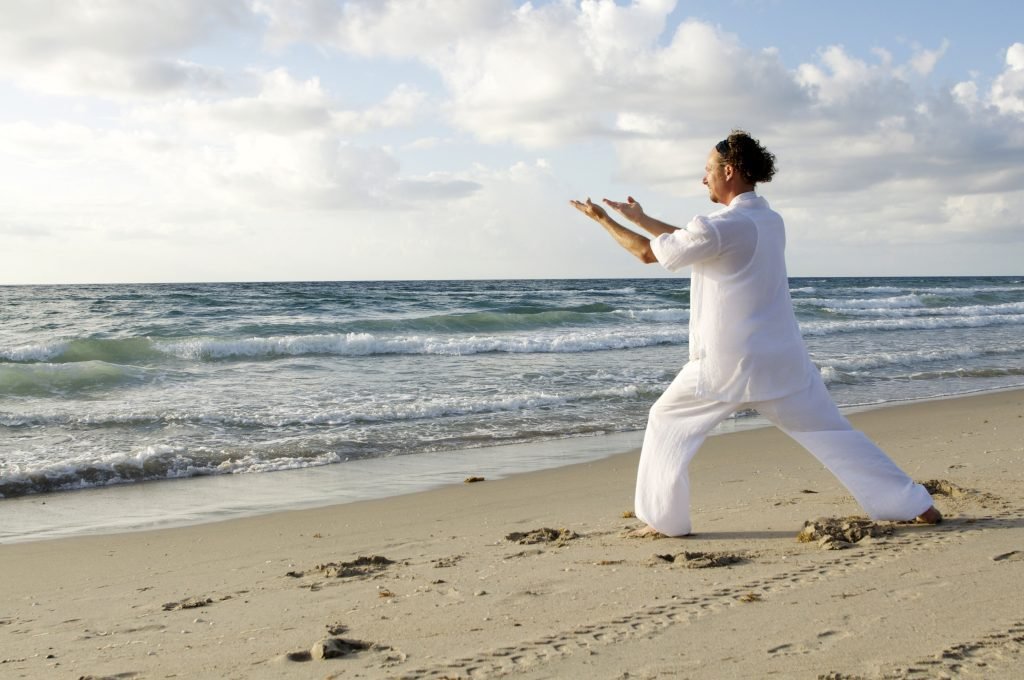Tai Chi, mindful breathing, and emotions
Tai Chi, and mindful breathing
Practicing Tai Chi we maintain a natural and conscious respiratory flow, that is, adapted to each moment, to each movement. We do not exercise specific control beyond trying to maintain the continuity of our breathing, avoiding interruptions and retention of air.
As we cultivate the quality of letting go (Zhan Zhuang), breathing - closely related to energetic movement - becomes more perceptible in its inner journey. Thus, the respiratory flow normalizes and becomes deeper, continuous and natural. The cultivation of this inner quality leads us to a fundamental principle that all Tai Chi masters agree on: 'you have to breathe with your whole body'.
Constantly focusing all our attention on the breath during the practice will lead us to self-knowledge of the body-mind-spirit network. We will observe that in the moments in which our attention is diverted towards the contents of our thoughts, the respiratory flow is altered.

Elaborating thoughts and breathing consciously are incompatible. At least when thoughts have a certain degree of importance or complexity to us. When we engage in this type of thinking, we unconsciously stop even breathing in order to give our full attention to the content of what we are thinking. During Tai Chi practice we pay attention to the action of each moment. This attention to the present moment, to the internal sensations of the practice, allows us to breathe consciously and aligned with the action that is happening.
Emotions in Tai Chi practice
Intense emotions alter our respiratory flow, sometimes overtly, sometimes more subtly. Sometimes during practice, we can observe how an emotion that arises accelerates our breathing and requires deeper inhalations seeking a greater amount of air. In others, on the contrary, emotions reduce our demand for air to a minimum, completely stopping inhalation or exhalation at times.
The intention to hold an idea, for example, about a movement I have already done or am going to do, a task I have pending after practice, or about an emotion I am having also tends to hinder the natural flow of our breathing.

On the contrary, attention to the internal movements of the Dan Tien, to expansion, contraction, oscillation, alignment of the structure, letting go of excessive tension,..., do not interfere and tend to normalize the flow of our breathing. , keeping it continuous and adapted to the demands of each moment. Balanced breathing induces states of mental calm and gives us the opportunity to enjoy every moment.
That is why it is important to repeat the Tai Chi sequences until the internal paths of the forms are recorded in our body memory, so as not to have to divert our attention to thoughts and to be able to efficiently cultivate the fundamental principles that all the exercises provide us. benefits of the practice.
Tai Chi benefits in our emotions
Habitually neglecting what happens in our inner space could lead us to lack of knowledge in managing our own emotions. Emotions that have not been observed or accepted within the scope of our consciousness tend to mobilize our energy abruptly. In a similar way to how the waves of the sea would do in a storm, if we were floating on the water and drifting.
This can lead us to difficulties in managing our emotions, to trying to avoid them, or on the contrary to remaining addicted to them. This toxic relationship with our emotions influences our way of thinking and therefore our state of mind.

Tai Chi practice and Chi Kung allows us to build a balanced relationship with our internal processes. The practice of gentle movements in connection with our breathing offers us a comfortable space from which to experience the flow of our emotions, in a different way than we usually do. This positively influences the internal sensations that emotions produce in us and the thoughts to which they lead us.
In this way, the practice behaves like a boat, from which we observe and feel the waves of emotions, making it oscillate from one side to the other, keeping us afloat and with the possibility of rowing and heading towards a safe port.


